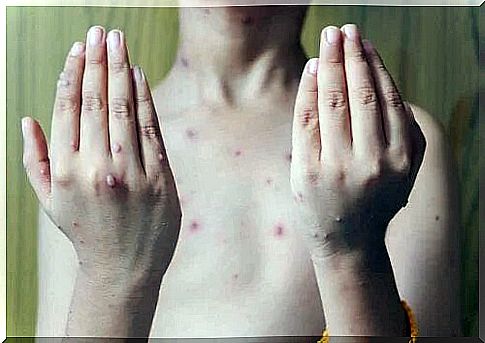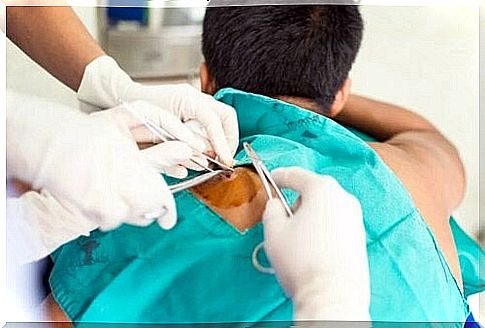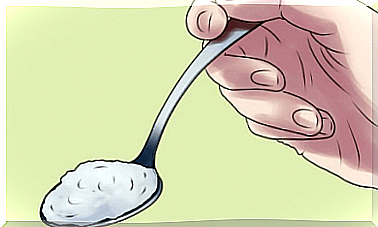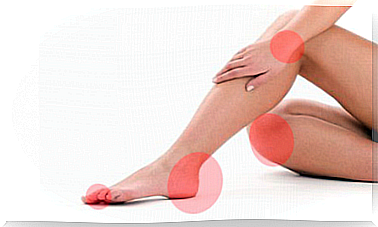Pemphigus Vulgaris: Symptoms And Treatments
Pemphigus vulgaris is an autoimmune disease that attacks the skin and mucous membranes of the human body. It is rare, but can be life threatening. In addition, no treatment currently exists. Here we tell you everything you need to know about this disease.

Pemphigus vulgaris, although it is a rare disease, has always aroused interest in medicine because of its rarity. Its treatment is long term, and although it is detected early today, it can still lead to death.
As a rare skin disease, its distribution around the world is also variable. According to epidemiological studies, some countries like Israel reach figures of up to five cases in 100,000, while in England the figures are only one case per 100,000.
In pediatric age, the risk of pemphigus vulgaris is minimal. Most cases appear in very old people, and with a tendency to become chronic. There is no difference in the number of patients in the world between men and women.
Since it is an autoimmune disease, where the antibodies’ own antibodies attack structures in the body that they do not recognize, it is not contagious. Those who suffer from it cannot pass it on to others by contact or proximity.
Skin blisters caused by pemphigus vulgaris are not life-threatening on their own, but they do have some complications that can eventually lead to death if treatment is not started. Among the most common complications are:
- Skin infections
- Sepsis: is the spread of infection to the blood
- Malnutrition: due to feeding difficulties due to mouth blisters
Causes of pemphigus vulgaris

Pemphigus vulgaris is an autoimmune disease where antibodies in the body attack proteins in the skin. These antibodies destroy the substances that hold skin cells together. When the cells are separated by the attack, the blisters characteristic of the pathology are formed.
A similar situation occurs in another related disease such as bullous pemphigus. In this case, the antibodies attack the proteins that join the superficial layer of the skin – epidermis – with the middle layer – dermis, separating them.
In pemphigus vulgaris, on the other hand, cells that are in the same layer of the skin separate. All of this takes place in the epidermis, the surface layer. By separating them and leaving more space between them, fluids build up which results in blistering outward.
Global studies reveal the suspicion of the existence of a genetic component in the disease. As the pathology is more common in certain ethnic groups, such as Ashkenazi Jews for example, it is assumed that hereditary factors are involved.
More rarely, drugs that can cause pemphigus vulgaris have been detected. Pemphigus vulgaris has been identified as a side effect of their absorption. Among them, we can cite:
- Penicillamine
- Angiotensin converting enzyme inhibitors: such as enalapril
- Nonsteroidal anti-inflammatory drugs: such as acetylsalicylic acid or aspirin
Symptoms
Symptoms of pemphigus vulgaris are blisters on the skin and mucous membranes of the body. In some cases, the skin may peel from rubbing or friction.
Thus, the blisters burst very easily, which leads to the risk of infection. When bursting, the blisters secrete their contents to the outside and leave an open space in the affected skin that promotes the entry of bacteria.
The typical location and progression of lesions is that they start in the mouth, then on the face and the mucous membranes of the genitals, and finally spread to the rest of the body. The patient may report pain, but a diagnostic feature is that the blisters do not itch.
In any case, even with the condition present, the diagnosis is difficult for any professional. For this reason, some additional methods are usually requested, for example:
- Skin biopsy
- Blood antibody test
- Oral and digestive endoscopy

Treatment of pemphigus vulgaris
The easiest cause to treat is when pemphigus vulgaris is an unwanted effect of a drug that the patient is consuming. In this case, it is usually sufficient to stop the drug. In a short time, the blisters disappear.
For the rest of the clinical presentations of pemphigus vulgaris, drug treatments guided by professionals with some experience in this type of pathology are necessary. Among the most widely used treatment options, there are:
- Corticosteroids : if the ampoules are few, they can be used as a cream. If there is greater extension, the oral route with tablets such as prednisone is preferred. As always when corticosteroids are used, medical supervision to avoid side effects is essential.
- Immunosuppressants : As this is an autoimmune disease, one option is to use drugs that stop the action of antibodies. Drugs such as azathioprine, mycophenolate and cyclophosphamide are on the list prescribed by specialists.
- Third option : when the disease is aggressive and the drugs mentioned above do not work, a third attack option is put in place, consisting of drugs that are more potent and, therefore, more susceptible to side effects, such as dapsone or rituximab.
Finally , people with pemphigus vulgaris should seek immediate medical attention. Treatment should be started quickly to avoid complications of the disease. Due to its characteristics, it is not a condition that can be managed without good professional advice.









